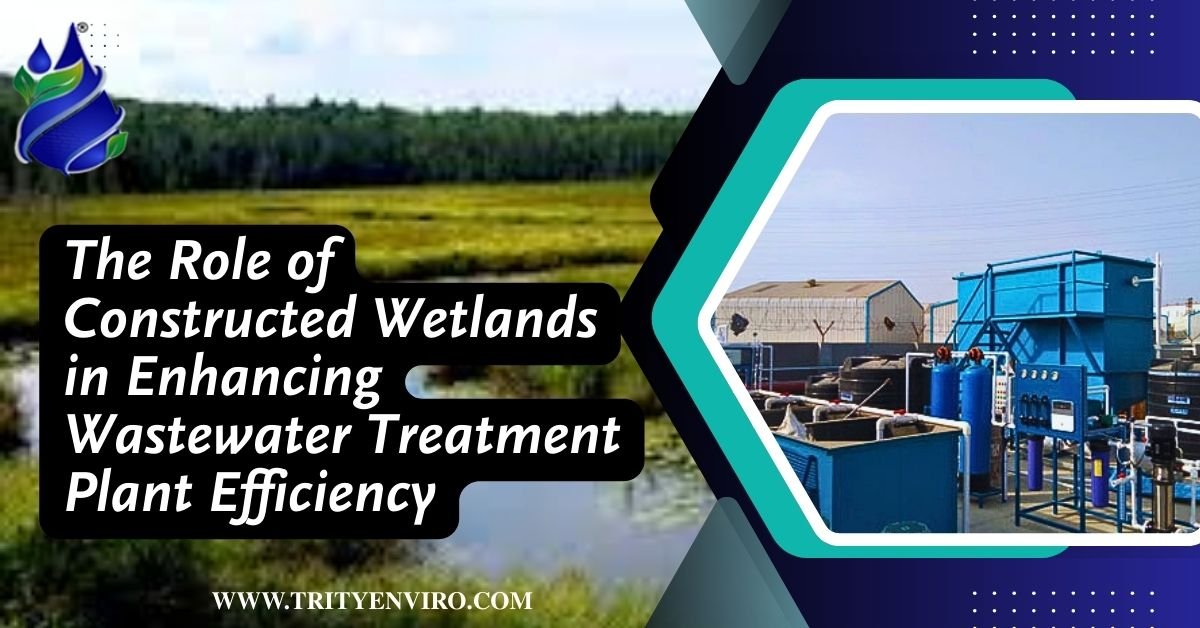
Introduction
Constructed wetlands are engineered systems that mimic natural wetlands. They use soil, plants, and microorganisms to treat wastewater. The pollutants are removed by physical, chemical, and biological wastewater treatment processes in these systems. Shallow basins filled with gravel or soil are the constructed wetlands. These basins allow horizontal or vertical flow of water. The vegetation assists in eliminating and adsorbing contaminants. Microorganisms in the wetland break down organic matter and harmful substances. The roots of the plants provide surface area for microbial growth. It combines the two to improve the overall system capacity of treatment.
Key Benefits of Using Constructed Wetlands in Wastewater Treatment
1. Low Operational Cost: Constructing wetlands requires very little labour and electricity. This reduces dependence on mechanical equipment and results in huge reduction in maintenance expenses as well as operational costs.
2. Natural and Sustainable Treatment: These systems use natural elements like plants and microbes. The process is eco-friendly and chemical-free since they do not use chemicals.
3. Improved Water Quality: Wetlands reduce suspended solids, nitrogen, phosphorus, and pathogens. For reasons of water quality improvement, particularly before discharge or reuse, their benefits are significant.
4. Support for Biodiversity: The constructed wetlands provide bird, insect, and aquatic species habitat. Indeed, they fulfil a wastewater treatment role but also help to enhance local biodiversity.
5. Effective in Rural and Urban Settings: They are suitable for small rural areas and usable in dense urban sites. As they are flexible, they are perfect for decentralized wastewater treatment plant setups.
Types of Constructed Wetlands Used in Modern Treatment Systems
1. Free Water Surface Wetlands: These resemble natural marshes. Aquatic plants grow above the soil surface, and wastewater flows above the soil surface among the plants. Biological treatment is carried out by sunlight and oxygen.
2. Subsurface Flow Wetlands: They are more common in modern facilities. Porous media like gravel below the surface allow water to pass through. It reduces odors and mosquito breeding.
3. Horizontal Subsurface Flow Wetlands: Water exposes one side and flows horizontally through the system. Microorganisms and plant roots interact with it and treat it.
4. Vertical Subsurface Flow Wetlands: On top of it, wastewaters are distributed and percolate downwards. The advantage of this method is greater oxygen transfer and improved nitrification.
5. Hybrid Wetland Systems: These combine horizontal and vertical flow units. Overall efficiency improves and they remove a broader group of pollutants.
How Constructed Wetlands Improve Plant Efficiency and Reduce Costs
Reduction of the load on mechanical treatment units is the result of constructed wetlands. Preliminary or secondary treatment and low energy use decrease the box system pressure and lengthen their lifespan. These systems create a buffer during peak flows. In this way, they can store and treat excess wastewater during high inflow periods. It keeps the quality of treatment consistent. They require little technical supervision.
Thus, they are ideal for places that lack qualified operators or advanced infrastructure. Wetlands also cut chemical usage. For instance, natural processes remove nutrients and pathogens, revealing the need for chemical disinfectants or additives. Thus, they make effluent safer and reduce chemical procurement costs. This provides high return on investment since their operational lifespan is long. With moderate upkeep, they are, once constructed, very effective for years.
Real-World Examples of Constructed Wetlands in Action
Constructed wetlands are used by several Indian municipalities to manage domestic wastewater. They are in Tamil Nadu, Himachal Pradesh, and elsewhere. Very good results have been obtained at low costs. Arcata Marsh in California combines natural wetlands with mechanical treatment, serving as an example of how to do that in the United States. By daily treating millions of gallons of wastewater, it supports wildlife. Vienna and other European cities have adopted wetlands for decentralized treatment.
Their systems fit into parks and all sorts of green urban spaces that render both ecological and recreational functions. Industries use wetlands in large-scale industrial effluent purification in China near Lake Taihu. They also act as a buffer to wetlands in heavily polluted areas and reduce nutrient pollution. Countries such as Kenya and Uganda in Africa use wetlands in rural communities. Sustainable and affordable gravity-fed designs, which rely on the local plants, provide no emissions.
Challenges and Limitations of Constructed Wetland Systems
1. Land Requirements: The amount of space needed by wetlands is greater than conventional treatment plants. Their application in dense urban areas with limited land availability is limited due to this.
2. Slower Treatment Rates: Wetland processes are slower. This is not appropriate when there is a need for rapid treatment or high wastewater volumes.
3. Climate Dependence: Cold temperatures can reduce microbial activity. It impacts the treatment efficiency in the cooler regions or during winter.
4. Clogging Issues: The media can also be clogged by solids without proper pre-treatment. They reduce hydraulic conductivity and require periodic maintenance or reconditioning.
5. Limited Industrial Application: Wetlands are less effective at treating very high-strength industrial wastewater. Many of these chemicals or toxic substances require specialized treatments to manage.
Future Trends in Constructed Wetlands for Wastewater Management
Future systems with constructed wetlands will incorporate smart technologies. Sensors will monitor water quality and flow rates in real-time. It enables faster response to performance problems. New plant species and substrates are being studied by researchers. If these innovations increase pollutant removal and decrease clogging, they could be advantageous for operation. Better nutrient uptake is studied with some plasticity in the form of algae-based wetlands.
Modular wetland units are becoming popular. These prefabricated systems offer easier transport and faster installation. For emergency response or remote communities, they are ideal. Green infrastructure policies support the adopted constructed wetlands. Today, people publicly recognise them to play a dual role in providing water treatment and landscape enhancement. Climate-resilient wetland systems are under development. Their aim is to perform well under different weather conditions and achieve long-term efficiency.


